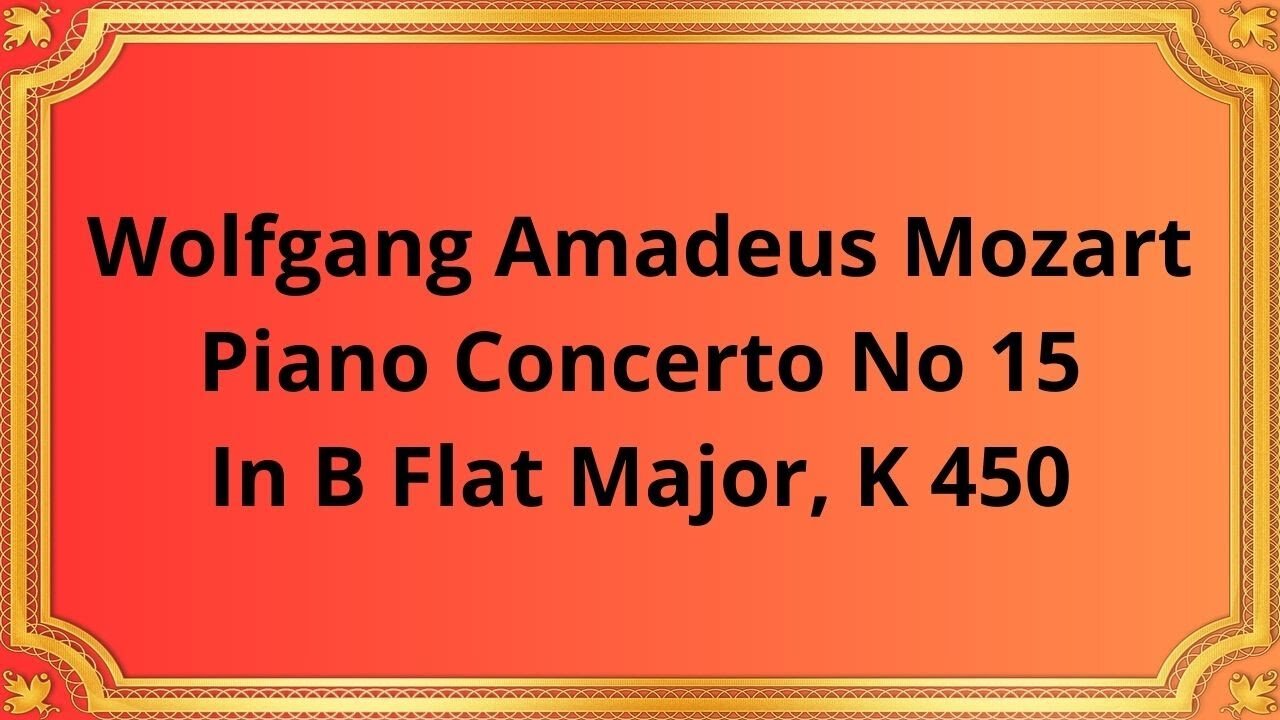Premium Only Content

Wolfgang Amadeus Mozart Piano Concerto No 15 In B Flat Major, K 450
#Mozart#Chamber_music#Classical_music#Quartet#musical_composition
Publication date 1954
Wilhelm Kempff
Wolfgang Amadeus Mozart's Piano Concerto No. 15 in B Flat Major, K 450, is a remarkable piece of classical music that continues to captivate audiences with its beauty and complexity. Composed in 1784, it is one of Mozart's most well-known piano concertos, and its influence can be felt in many other works of music.
The concerto consists of three movements: Allegro, Andante, and Allegro. The first movement, Allegro, is a lively and energetic piece that features a playful dialogue between the soloist and the orchestra. The second movement, Andante, is a slower and more contemplative piece that showcases Mozart's mastery of melody and harmony. The final movement, Allegro, returns to the lively and energetic theme of the first movement, bringing the concerto to a thrilling and satisfying conclusion.
The Piano Concerto No. 15 in B Flat Major, K 450, was composed during a particularly productive period in Mozart's life. He was only 28 years old at the time, and he had already established himself as one of the most talented and innovative composers of his generation. The concerto was written for a subscription concert series in Vienna, where Mozart was living at the time, and it was first performed on March 7, 1784.
One of the notable features of the Piano Concerto No. 15 in B Flat Major, K 450, is its use of the piano as both a solo instrument and an integral part of the orchestra. Mozart's writing for the piano is particularly virtuosic, with the soloist being called upon to perform dazzling runs and arpeggios. At the same time, the piano is often used to support and complement the orchestral parts, creating a rich and complex tapestry of sound.
Another noteworthy aspect of the concerto is its use of sonata form in the first and final movements. Sonata form is a musical structure that was popular in the Classical era and consists of three main sections: exposition, development, and recapitulation. Mozart was a master of sonata form, and he uses it to great effect in this concerto, creating a sense of unity and coherence that ties the entire work together.
In conclusion, Mozart's Piano Concerto No. 15 in B Flat Major, K 450, is a masterpiece of classical music that continues to captivate and inspire audiences to this day. Its use of the piano as both a solo instrument and an integral part of the orchestra, as well as its masterful use of sonata form, make it a remarkable work of art that showcases Mozart's immense talent and creativity. Whether you're a music lover or a casual listener, this concerto is sure to leave a lasting impression.
-
 22:54
22:54
Classical music_Music Inspiration
3 days agoLudwig van Beethoven Quartet No. 6 in B-flat major, Op. 18 No. 6
242 -
 LIVE
LIVE
GritsGG
3 hours agoWin Streaking! Most Wins 3499+ 🧠
123 watching -
 DVR
DVR
Bannons War Room
6 months agoWarRoom Live
34.1M8K -
 LIVE
LIVE
ttvglamourx
3 hours ago $1.01 earnedPLAYING WITH VIEWERS !DISCORD
101 watching -
 1:21:38
1:21:38
VapinGamers
3 hours ago $1.95 earnedTools of the Trade - EP04 Of Thumbnails and Titles, What's Important? - !rumbot !music
23.5K1 -
![Mr & Mrs X - [DS] Trafficking Empire – How Epstein Built His Web of Wealth and Deceit:Part 1 - Ep 5](https://1a-1791.com/video/fww1/f0/s8/1/o/k/J/d/okJdz.0kob-small-Mr-and-Mrs-X-DS-Trafficking.jpg) 52:11
52:11
X22 Report
5 hours agoMr & Mrs X - [DS] Trafficking Empire – How Epstein Built His Web of Wealth and Deceit:Part 1 - Ep 5
88.1K24 -
 1:13:18
1:13:18
Wendy Bell Radio
9 hours agoPet Talk With The Pet Doc
58.4K74 -
 5:54:39
5:54:39
dieseldesigns
7 hours agoExploring Labs In the DARK! // Abiotic factor
13.9K -
 LIVE
LIVE
BBQPenguin_
6 hours agoDragonball Z - The Android Saga
78 watching -
 LIVE
LIVE
Total Horse Channel
7 hours ago2025 URCHA Futurity | Derby & Horse Show | Saturday
27 watching